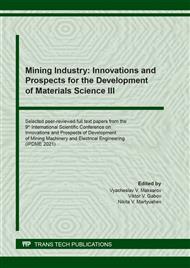p.3
p.13
p.21
p.28
p.41
p.48
p.54
p.60
Studying Breakdown and Electrical Hardening of Crystal Materials with Proton Conductivity
Abstract:
The breakdown mechanism of a number of crystal materials with hydrogen bonds is investigated. The contribution of the proton component is considered and it is shown that the formation of an avalanche-streamer discharge is characteristic of multilayer electrical insulation materials. As a result of the breakdown, a discharge channel is formed, along which the protons that form the reverse proton conductivity will move in the opposite direction. In the process of directed translational diffusion of protons, the formation and decay of H3O+ and OH- ions occur, which move in opposite directions, resulting in the formation of a reverse positive streamer from the anode to the cathode. For layered samples of phlogopite, muscovite, and magnesium hydrosilicate, it is shown that for thin samples, a volume charge is formed as a result of a multi-avalanche-streamer discharge that significantly exceeds the volume charge that occurs in thick samples, which is determined by the value of high temperature maximum of the spectrum of thermally stimulated depolarization currents. The field of the volume charge reduces the external electric field, as a result of which the breakdown field strength in thin samples increases. That is, the material is electrically strengthened. Based on the results of the research, a non-destructive method of electrical hardening of electrical insulation materials was developed, which was confirmed by the patent.
Info:
Periodical:
Pages:
3-12
Citation:
Online since:
February 2022
Authors:
Price:
Сopyright:
© 2022 Trans Tech Publications Ltd. All Rights Reserved
Share:
Citation:


